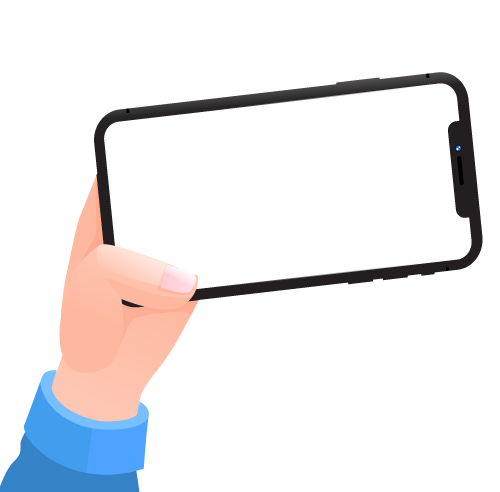
In its most basic form, augmented reality, or AR is the process of superimposing computer-generated images or text, etc. over a live view of the world. Augmented Reality is not new in fact its been around a while, the most commonly cited example besides the televised sports and weather analysis would be the Pokemon Game.


Augmented Reality Graphics (ARG) are graphics that appear in a live, direct or indirect view of a physical, real-world environment in which computer-generated sensory input such as sound, video, graphics, or GPS data augments the elements. perception of reality.

AR is used to aid archaeological research, by augmenting archaeological features onto the modern landscape, enabling archaeologists to formulate conclusions about site placement and configuration.
Another application given to AR in this field is the possibility for users to rebuild ruins, buildings, or even landscapes as they formerly existed.
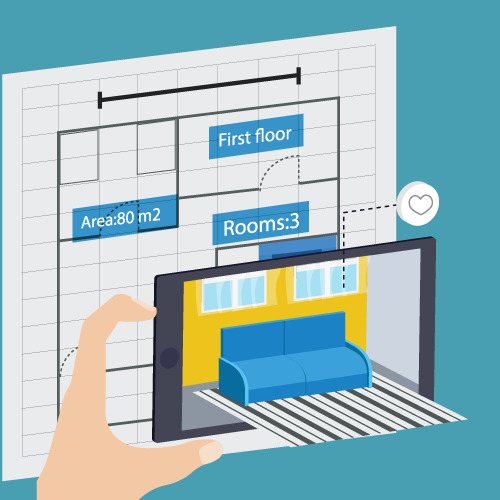
AR aids in visualizing building projects. Computer-generated images of a structure are superimposed into a real-life local view of a property before the physical building is constructed there.
Augmented Reality graphics are also employed within an architect’s work space, rendering into their view animated 3D visualizations of their 2D drawings. Architecture sight-seeing can be enhanced with AR applications allowing users viewing a building’s exterior to virtually see through its walls, viewing its interior objects and layout.
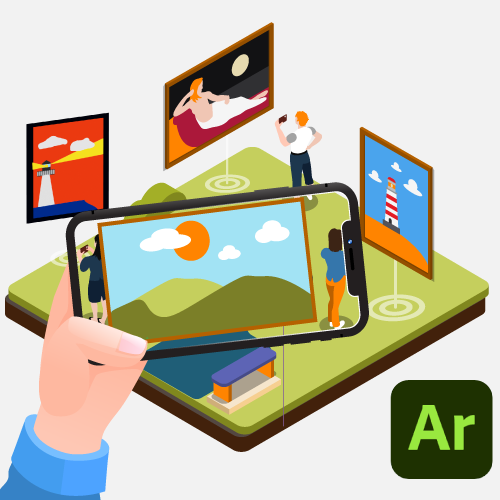
PlainAiR Gallery takes it’s name from the french phrase En Plein Air which refers the idea of taking your studio outside in plain air.
Galleries uses todays immersive technology and Augments your art work so that it becomes your own Art Gallery viewable in Plain Air! Now you can share a new experience featuring your latest creative work.
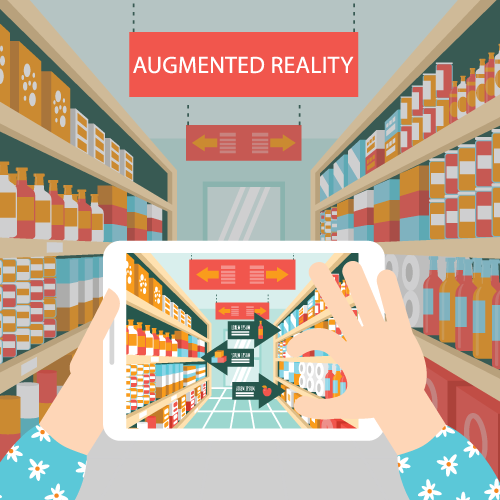
By enabling a customer to see what is inside a product’s box without opening it, Augmented Reality improves product previews and be used to help choose items from a kiosk or a catalog.
Activating views of extra material like customization choices and other photographs of the product in use is possible with scanned images of products. Print and video marketing are combined with augmented reality. Certain “trigger” pictures can be included in printed marketing materials so that when they are scanned by an AR-enabled device utilizing image recognition, a video version of the promotional content is activated.
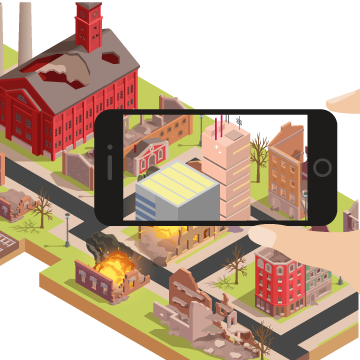
As GPS accuracy increases, businesses use augmented reality to view georeferenced…
… representations of building sites, subterranean infrastructure, cables, and pipelines via mobile devices.
Since whole structures were destroyed, this served as a reminder of the scale of the calamity as well as providing planners with tools to reference the previous cityscape.

Augmented Reality applications are used to enhance a standard curriculum.
Textbooks, flashcards, and other reading materials for school will have “markers” implanted in them that, when scanned by an augmented reality (AR) device, offer the student further information in a multimedia format.
Students will engage with computer-generated simulations of historical events to explore and learn details about each significant area of the event site. Students will be able to interact with a virtual representation of a molecule that appears in a camera picture that is positioned at a marker held in their hand and visualize the spatial structure of a molecule to better understand chemistry.

Pokémon Go is a 2016 augmented reality mobile game that attracted over 100 million users.
Gamers use augmented reality to play digital games in a real-world setting. There have been many technological advancements in the last fifteen years, resulting in greater movement detection and the potential of the Wii’s existence, as well as direct sensing of the player’s movements.
The gaming industry has benefited a lot from the development of this technology. A number of games have been developed for prepared indoor environments. Early AR games also include AR air hockey, collaborative combat against virtual enemies, and an AR-enhanced pool games. A significant number of games incorporate AR in them and the introduction of the smartphone has made a bigger impact.

Industrial designers use Augmented Reality to explore the design and operation of a product before it is completed.
Volkswagen employs augmented reality to compare computed and real-world crash test pictures. A car’s body structure and engine layout can be visualized and modified using augmented reality. AR can also be used to compare digital and physical mock-ups in order to identify discrepancies.

Information that would normally be hidden, such as the patient’s organ condition, blood pressure, and cardiac rate, can be shown to the surgeon via augmented reality.
By fusing two different picture sources, like video and X-rays, augmented reality (AR) may be utilized to provide a doctor a glimpse inside a patient.
Examples include creating a virtual X-ray picture from an earlier tomography scan, using real-time images from ultrasound and confocal microscopy probes, or identifying a tumor’s location in an endoscopic video. AR may make it easier to see a fetus growing within a mother. View mixed reality as well.
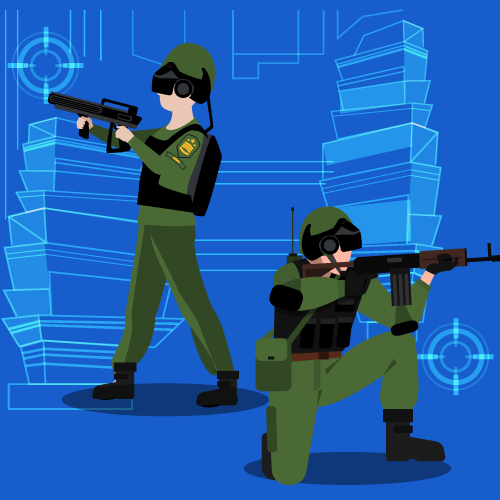
In a conflict, augmented reality acts as a networked communication system that instantly displays valuable battlefield data on a soldier’s goggles.
People and other items can be tagged with unique signs from the perspective of the soldier to alert them to possible risks. To assist a soldier’s navigation and provide a 360° picture of the battlefield, virtual maps and 360° view camera imagery may also be produced. This information can then be sent to military officials at a distant command center.
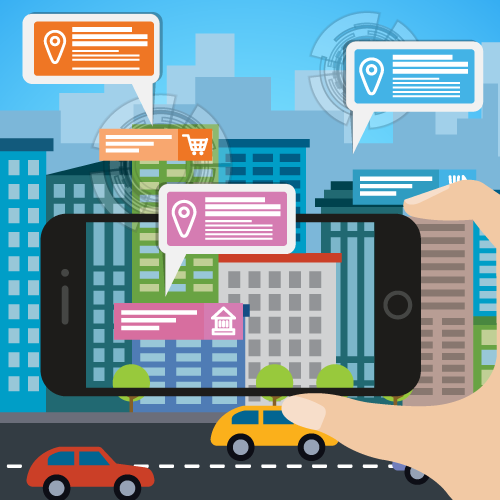
AR can augment the effectiveness of navigation devices. Information can be displayed on an automobile’s windshield indicating destination directions…
…and meter, weather, terrain…road conditions and traffic information as well as alerts to potential hazards in their path. Aboard maritime vessels, AR can allow bridge watch-standers to continuously monitor important information such as a ship’s heading and speed while moving throughout the bridge.
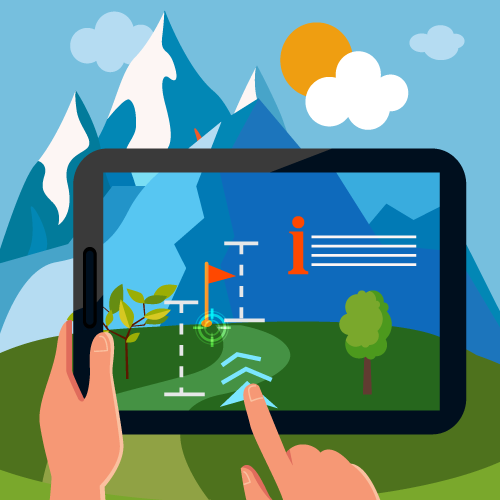
In sports broadcasting, augmented reality has become commonplace. Tracked camera feeds are used to provide see-through and overlay….
… augmentation for increased audience viewing in sports and entertainment venues. AR can improve concert and theatrical performances in a variety of ways, from football viewing aids to snooker ball trajectory pathways.

A mechanic conducting system maintenance, for instance, will see operating instructions explained via labels on various system components.
There are several benefits to using AR on production processes. Along with Boeing, BMW and Volkswagen are well renowned for integrating this technology into their assembly lines in order to optimise their manufacturing and assembly processes. Large machines are challenging to maintain due to their many layers or architecture. With AR, employees can view the machinery as if it were an x-ray machine, allowing them to do their work much more rapidly.
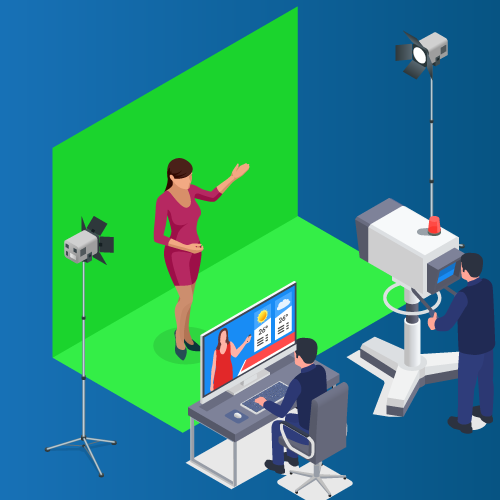
Forecasts for the weather were the first application of augmented reality on television.
The first genuine use of augmented reality to television is these animated visualizations, which are combined with 3D graphic symbols and mapped to a single virtual geospace model.
A lot of sports coverage now uses augmented reality. In order to boost audience watching in sporting and entertainment venues, tracked camera feeds are employed to enable see-through and overlay augmentation. The line that the offensive team must cross to get a first down is marked by a yellow “first down” line on television broadcasts of American football games. When AR is utilized in combination with football and other sporting events, commercial advertisements are superimposed into the image of the playing field. Rugby fields and cricket fields each include areas with sponsored pictures. Swimming telecasts typically put a line across the lanes as a race continues to indicate the position of the current record holder, allowing viewers to contrast the current race with the greatest performance.
Thanks to augmented reality, viewers of Next Generation TV are beginning to engage with the programs they’re viewing. They can interact with things in a piece of software by dragging and dropping them there. avatars of actual viewer

Apps that employ augmented reality enhance a user’s travel experience by providing current details on a location and its attractions…
… including reviews made by previous guests. Visitors view simulations of historical events, locations, and artifacts in their current landscape by using augmented reality (AR) programs. In AR apps, audio also may be utilized to convey location information by announcing interesting objects as they come into view for the user.

AR systems interpret foreign text on signs and menus and, in a user’s augmented view…
… re-display the text in the user’s language. Spoken words of a foreign language are translated and displayed in a user’s view as printed subtitles.
The term immersive reality or extended reality will imply experiences that once upon a time we call augmented reality or virtual reality. As the technologies evolve so do the ideas of how or where or when it is used.
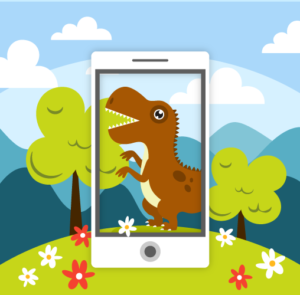
AR is used to aid archaeological research, by augmenting archaeological features onto the modern landscape, enabling archaeologists to formulate conclusions about site placement and configuration.
Another application given to AR in this field is the possibility for users to rebuild ruins, buildings, or even landscapes as they formerly existed.
 AR aids in visualizing building projects. Computer-generated images of a structure can be superimposed into a real life local view of a property before the physical building is constructed there. AR can also be employed within an architect’s work space, rendering into their view animated 3D visualizations of their 2D drawings. Architecture sight-seeing is enhanced with AR applications allowing users viewing a building’s exterior to virtually see through its walls, viewing its interior objects and layout.
AR aids in visualizing building projects. Computer-generated images of a structure can be superimposed into a real life local view of a property before the physical building is constructed there. AR can also be employed within an architect’s work space, rendering into their view animated 3D visualizations of their 2D drawings. Architecture sight-seeing is enhanced with AR applications allowing users viewing a building’s exterior to virtually see through its walls, viewing its interior objects and layout.
 PlainAiR Gallery takes it’s name from the french phrase En Plein Air which refers the idea of taking your studio outside in plain air.
PlainAiR Gallery takes it’s name from the french phrase En Plein Air which refers the idea of taking your studio outside in plain air.
Galleries uses todays immersive technology and Augments your art work so that it becomes your own Art Gallery viewable in Plain Air! Now you can share a new experience featuring your latest creative work.
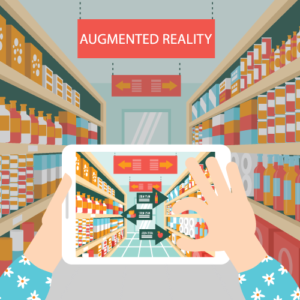 By enabling a customer to see what is inside a product’s box without opening it, AR improves product previews. AR is also used to help choose items from a kiosk or a catalogue. Activating views of extra material like customization choices and other photographs of the product in use is possible with scanned images of products. Print and video marketing are combined with augmented reality. Certain “trigger” pictures can be included in printed marketing materials so that when they are scanned by an AR-enabled device utilizing image recognition, a video version of the promotional content is activated.
By enabling a customer to see what is inside a product’s box without opening it, AR improves product previews. AR is also used to help choose items from a kiosk or a catalogue. Activating views of extra material like customization choices and other photographs of the product in use is possible with scanned images of products. Print and video marketing are combined with augmented reality. Certain “trigger” pictures can be included in printed marketing materials so that when they are scanned by an AR-enabled device utilizing image recognition, a video version of the promotional content is activated.
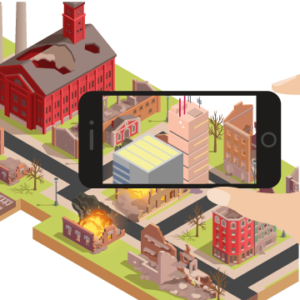 As GPS accuracy increases, businesses use augmented reality to view georeferenced representations of building sites, subterranean infrastructure, cables, and pipelines via mobile devices. After the Christchurch earthquake, the University of Canterbury created CityViewAR, which allowed city planners and engineers to visualize the structures that were severely damaged. Since whole structures were destroyed, this served as a reminder of the scale of the calamity as well as providing planners with tools to reference the previous cityscape.
As GPS accuracy increases, businesses use augmented reality to view georeferenced representations of building sites, subterranean infrastructure, cables, and pipelines via mobile devices. After the Christchurch earthquake, the University of Canterbury created CityViewAR, which allowed city planners and engineers to visualize the structures that were severely damaged. Since whole structures were destroyed, this served as a reminder of the scale of the calamity as well as providing planners with tools to reference the previous cityscape.
Education.
 Augmented reality applications are used to enhance a standard curriculum. Textbooks, flashcards, and other reading materials for school may have “markers” implanted in them that, when scanned by an augmented reality (AR) device, offer the student further information in a multimedia format. Students will engage with computer-generated simulations of historical events to explore and learn details about each significant area of the event site. Students can interact with a virtual representation of a molecule that appears in a camera picture that is positioned at a marker held in their hand and visualize the spatial structure of a molecule to better understand chemistry.
Augmented reality applications are used to enhance a standard curriculum. Textbooks, flashcards, and other reading materials for school may have “markers” implanted in them that, when scanned by an augmented reality (AR) device, offer the student further information in a multimedia format. Students will engage with computer-generated simulations of historical events to explore and learn details about each significant area of the event site. Students can interact with a virtual representation of a molecule that appears in a camera picture that is positioned at a marker held in their hand and visualize the spatial structure of a molecule to better understand chemistry.
 Pokémon Go is a 2016 augmented reality mobile game that attracted over 100 million users. Gamers use augmented reality to play digital games in a real-world setting. There have been many technological advancements in the last ten years, resulting in greater movement detection and the potential of the Wii’s existence, as well as direct sensing of the player’s movements.
Pokémon Go is a 2016 augmented reality mobile game that attracted over 100 million users. Gamers use augmented reality to play digital games in a real-world setting. There have been many technological advancements in the last ten years, resulting in greater movement detection and the potential of the Wii’s existence, as well as direct sensing of the player’s movements.
The gaming industry has benefited a lot from the development of this technology. A number of games have been developed for prepared indoor environments. Early AR games also include AR air hockey, collaborative combat against virtual enemies, and an AR-enhanced pool games. A significant number of games incorporate AR in them and the introduction of the smartphone has made a bigger impact.
 Industrial designers use augmented reality to explore the design and operation of a product before it is completed. Volkswagen employs augmented reality to compare computed and real-world crash test pictures. A car’s body structure and engine layout can be visualized and modified using augmented reality. AR can also be used to compare digital and physical mock-ups in order to identify discrepancies.
Industrial designers use augmented reality to explore the design and operation of a product before it is completed. Volkswagen employs augmented reality to compare computed and real-world crash test pictures. A car’s body structure and engine layout can be visualized and modified using augmented reality. AR can also be used to compare digital and physical mock-ups in order to identify discrepancies.
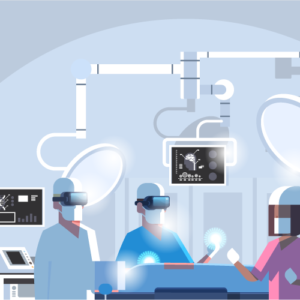 Information that would normally be hidden, such as the patient’s organ condition, blood pressure, and cardiac rate, are now shown to the surgeon via augmented reality. By fusing two different picture sources, like as video and X-rays, augmented reality (AR) may be utilized to provide a doctor a glimpse inside a patient.
Information that would normally be hidden, such as the patient’s organ condition, blood pressure, and cardiac rate, are now shown to the surgeon via augmented reality. By fusing two different picture sources, like as video and X-rays, augmented reality (AR) may be utilized to provide a doctor a glimpse inside a patient.
Examples include creating a virtual X-ray picture from an earlier tomography scan, using real-time images from ultrasound and confocal microscopy probes, or identifying a tumor’s location in an endoscopic video. AR makes it easier to see a fetus growing within a mother.
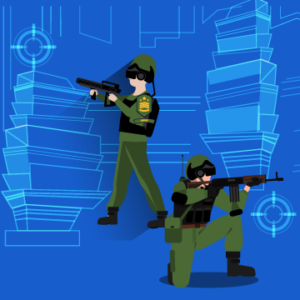 In a conflict, augmented reality (AR) acts as a networked communication system that instantly displays valuable battlefield data on a soldier’s goggles. People and other items are tagged with unique signs from the perspective of the soldier to alert them to possible risks. To assist a soldier’s navigation and provide a 360° picture of the battlefield, virtual maps and 360° view camera imagery is also produced. This information is then sent to military officials at a distant command centre.
In a conflict, augmented reality (AR) acts as a networked communication system that instantly displays valuable battlefield data on a soldier’s goggles. People and other items are tagged with unique signs from the perspective of the soldier to alert them to possible risks. To assist a soldier’s navigation and provide a 360° picture of the battlefield, virtual maps and 360° view camera imagery is also produced. This information is then sent to military officials at a distant command centre.
 AR augments the effectiveness of navigation devices. Information is displayed on an automobile’s windshield indicating destination directions and meter, weather, terrain, road conditions and traffic information as well as alerts to potential hazards in their path. Aboard maritime vessels, AR can allow bridge watch-standers to continuously monitor important information such as a ship’s heading and speed while moving throughout the bridge or performing other tasks.
AR augments the effectiveness of navigation devices. Information is displayed on an automobile’s windshield indicating destination directions and meter, weather, terrain, road conditions and traffic information as well as alerts to potential hazards in their path. Aboard maritime vessels, AR can allow bridge watch-standers to continuously monitor important information such as a ship’s heading and speed while moving throughout the bridge or performing other tasks.
 Augmented Reality AR combined with Virtual Reality VR are two key ingredients for marketing Real Estate. The seller and buyer can both benefit by saving time as it allows a much more immersive experience without actually going inside or getting information to help you decide whether or not this is the right property for you.
Augmented Reality AR combined with Virtual Reality VR are two key ingredients for marketing Real Estate. The seller and buyer can both benefit by saving time as it allows a much more immersive experience without actually going inside or getting information to help you decide whether or not this is the right property for you.
 When AR is utilized in combination with football and other sporting events, commercial advertisements are superimposed into the image of the playing field.
When AR is utilized in combination with football and other sporting events, commercial advertisements are superimposed into the image of the playing field.
In sports broadcasting, augmented reality has become commonplace. Tracked camera feeds are used to provide see-through and overlay augmentation for increased audience viewing in sports and entertainment venues. AR can improve concert and theatrical performances in a variety of ways, from football viewing aids to snooker ball trajectory pathways.
 Complex operations like assembly, maintenance, and surgery are made simpler by expanding the range of vision. A mechanic conducting system maintenance, for instance, can see operating instructions explained via labels on various system components. There are several benefits to using AR in production processes. Along with Boeing, BMW and Volkswagen are well renowned for integrating this technology into their assembly lines in order to optimize their manufacturing and assembly processes. Large machines are challenging to maintain due to their many layers or architecture. With AR, employees can view the machinery as if it were an x-ray machine, allowing them to do their work much more rapidly.
Complex operations like assembly, maintenance, and surgery are made simpler by expanding the range of vision. A mechanic conducting system maintenance, for instance, can see operating instructions explained via labels on various system components. There are several benefits to using AR in production processes. Along with Boeing, BMW and Volkswagen are well renowned for integrating this technology into their assembly lines in order to optimize their manufacturing and assembly processes. Large machines are challenging to maintain due to their many layers or architecture. With AR, employees can view the machinery as if it were an x-ray machine, allowing them to do their work much more rapidly.
 Forecasts for the weather were the first application of augmented reality on television. It has become standard practice in weather casting to show full motion video of photos captured in real-time from several cameras and other imaging equipment. The first genuine use of augmented reality in television is these animated visualizations, which are combined with 3D graphic symbols and mapped to a single virtual geospace model.
Forecasts for the weather were the first application of augmented reality on television. It has become standard practice in weather casting to show full motion video of photos captured in real-time from several cameras and other imaging equipment. The first genuine use of augmented reality in television is these animated visualizations, which are combined with 3D graphic symbols and mapped to a single virtual geospace model.
A lot of sports coverage now uses augmented reality. In order to boost audience watching in sporting and entertainment venues, tracked camera feeds are employed to enable see-through and overlay augmentation.
The line that the offensive team must cross to get a first down is marked by a yellow “first down” line on television broadcasts of American football games. When AR is utilized in combination with football and other sporting events, commercial advertisements are superimposed on the image of the playing field. Rugby fields and cricket fields each include areas with sponsored pictures. Swimming telecasts typically put a line across the lanes as a race continues to indicate the position of the current record holder, allowing viewers to contrast the current race with the greatest performance.
Thanks to augmented reality, viewers of Next Generation TV are beginning to engage with the programs they’re viewing. They can interact with things in a piece of software by dragging and dropping them there. avatars of actual viewers of the same show in the present.
 Apps that employ augmented reality can enhance a user’s travel experience by providing current details on a location and its attractions, including reviews made by previous guests. Visitors can view simulations of historical events, locations, and artifacts in their current landscape by using augmented reality (AR) programs. In AR apps, audio may also be utilized to convey location information by announcing interesting objects as they come into view for the user.
Apps that employ augmented reality can enhance a user’s travel experience by providing current details on a location and its attractions, including reviews made by previous guests. Visitors can view simulations of historical events, locations, and artifacts in their current landscape by using augmented reality (AR) programs. In AR apps, audio may also be utilized to convey location information by announcing interesting objects as they come into view for the user.
 AR systems can interpret foreign text on signs and menus and, in a user’s augmented view, re-display the text in the user’s language. Spoken words of a foreign language can be translated and displayed in a user’s view as printed subtitles.
AR systems can interpret foreign text on signs and menus and, in a user’s augmented view, re-display the text in the user’s language. Spoken words of a foreign language can be translated and displayed in a user’s view as printed subtitles.